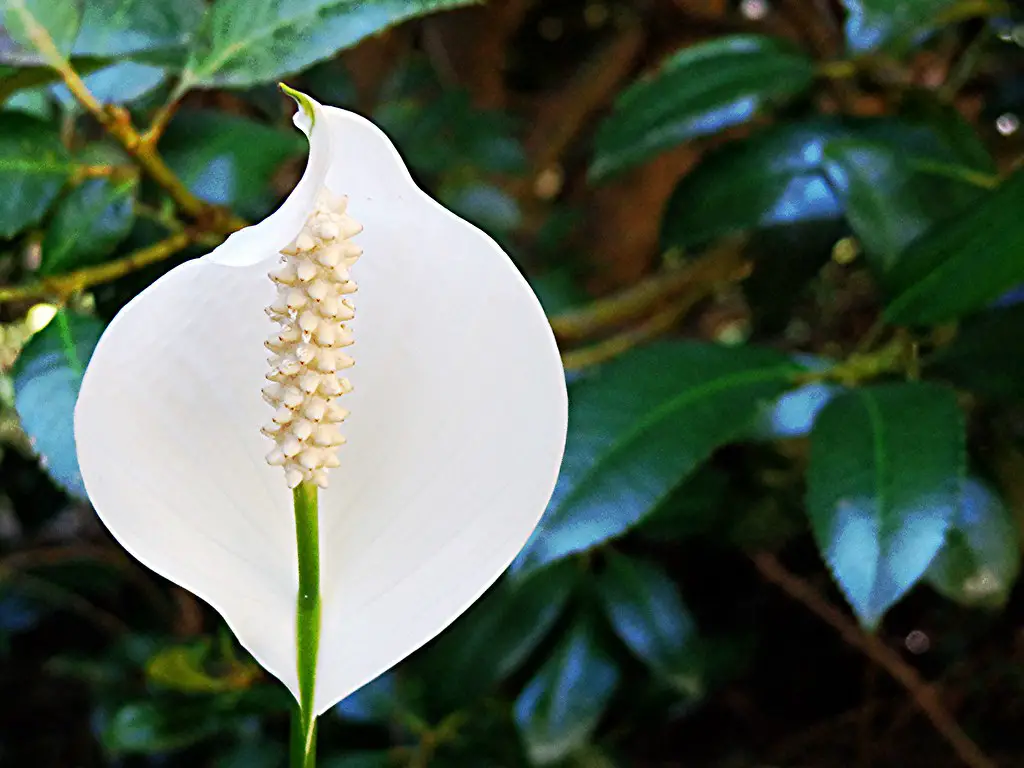The Peace Lily, scientifically known as Spathiphyllum, is one of the most popular houseplants known for its elegant appearance and air-purifying qualities. Its shiny green leaves and unique white flowers, which resemble a white flag of peace, make it a favored choice for homes, offices, and even as thoughtful gifts.
Not only are Peace Lilies visually appealing, but they are also relatively easy to care for, making them suitable for both novice and experienced gardeners. The plant is often celebrated for its ability to thrive in low-light conditions and to filter out certain toxins from the air.
The Peace Lily’s natural habitat is tropical forests, where it grows on the forest floor in dappled sunlight. Its adaptation to these conditions makes it a versatile indoor plant that brings a touch of the tropics into various living spaces.
| Aspect | Details |
|---|---|
| Common Names | Peace Lily |
| Botanical Name | Spathiphyllum |
| Family | Araceae |
| Plant Type | Evergreen perennial |
| Mature Size | 1-4 feet tall |
| Sun Exposure | Low to bright indirect light |
| Soil Type | Well-draining, peat-based soil |
| Hardiness Zones | 11-12 (indoors in most climates) |
| Native Area | Tropical Americas and Southeast Asia |
Peace Lily Care
Caring for a Peace Lily is relatively straightforward, but attention to some specific requirements can make the difference between a thriving plant and one that merely survives. The plant needs indirect light, regular watering without overwatering, and occasional fertilizing.
A humid environment is essential for the Peace Lily, so placing it near a humidifier or regularly misting it with water can keep it happy. Ensuring that the soil is moist but not soggy will prevent root rot and other common problems.
Light Requirement for Peace Lily
Peace Lilies can thrive in low to bright indirect light. They are quite tolerant but avoid placing them in direct sunlight, which can scorch the leaves.
Soil Requirements for Peace Lily
A well-draining, peat-based soil mix is ideal for Peace Lilies. Ensuring good drainage will prevent waterlogging and subsequent root rot.
Water Requirements for Peace Lily
Water the Peace Lily when the top inch of soil feels dry. Be mindful not to overwater, as this can lead to root rot. The plant may also signal when it needs water by drooping slightly.
Temperature and Humidity
Peace Lilies prefer temperatures between 65-80°F (18-27°C) and high humidity levels. Humidity can be increased by misting or placing a humidifier nearby.
Fertilizer
Feed the Peace Lily with a balanced liquid fertilizer every 6-8 weeks during the growing season. Avoid over-fertilizing, as it may lead to brown leaf tips.
Pruning Peace Lily
Pruning is generally done to remove dead or yellowing leaves. Trim these back to the base of the plant to encourage new growth.
Propagating Peace Lily
Peace Lilies can be propagated by division. Separate the plant into two or more sections, ensuring each has roots, and replant in suitable soil.
How To Grow Peace Lily From Seed
Growing Peace Lily from seed is rare and often unnecessary, as the plant is more commonly propagated through division.
Common Pests & Plant Diseases
Mealybugs and Spider Mites
These pests can be treated with insecticidal soap or neem oil.
Root Rot
Caused by overwatering, root rot can be prevented by using well-draining soil and avoiding excess water.
Common Problems With Peace Lily
Brown Leaf Tips
This is often due to low humidity or over-fertilizing. Increase humidity and reduce fertilizer use.
Yellowing Leaves
Yellow leaves may indicate overwatering. Allow the soil to dry slightly between waterings.
Drooping
A drooping Peace Lily likely needs water. Check soil moisture and water accordingly.
Pro Tips
- Keep away from direct sunlight to prevent leaf scorching.
- Maintain high humidity for optimal growth.
- Be mindful of watering – neither too much nor too little.
- Place in a bright bathroom or kitchen where humidity is naturally higher.
- Consider repotting every couple of years to refresh the soil and inspect roots.




